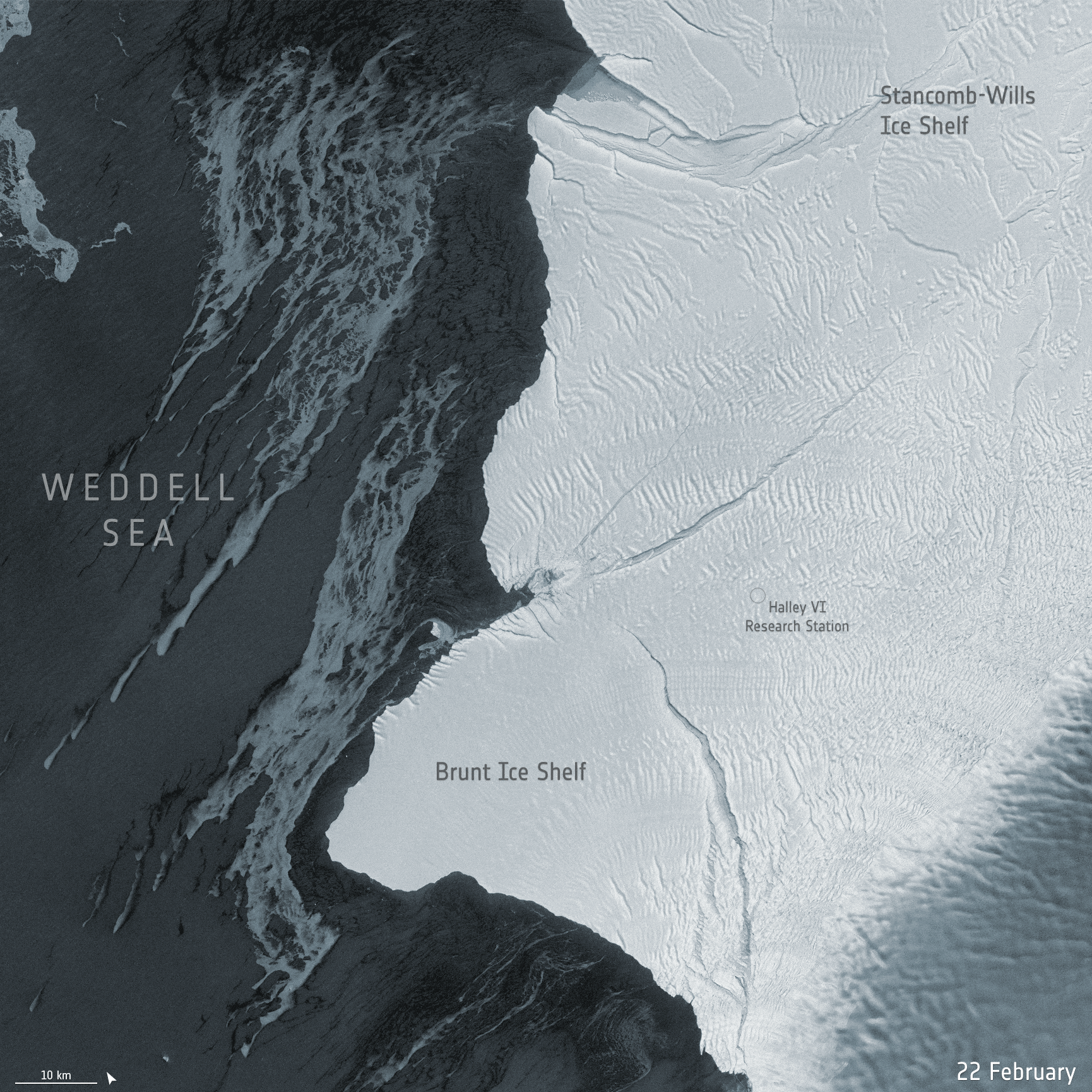


The calving of the massive new iceberg was captured by the Moderate Resolution Imaging Spectroradiometer on NASA’s Aqua satellite, and confirmed by the Visible Infrared Imaging Radiometer Suite instrument on the joint NASA/NOAA Suomi National Polar.

All data are sent back to Cambridge for analysis, so we know what is happening even in the Antarctic winter – when there are no staff on the station, it is dark for 24 hours and the temperature falls below minus 50 degrees C (or -58F)," Professor Francis.īAS glaciologist Professor Dominic Hodgson said that this calving event has been expected to be a part of behavior of the Brunt Ice Shelf, not a link to climate change, the statement read. An iceberg about the size of the state of Delaware split off from Antarctica’s Larsen C ice shelf sometime between July 10 and July 12. The finger-shaped chunk of ice, which is roughly 105 miles (170 kilometers) long and 15 miles (25. Scientists from the British Antarctic Survey first detected c. An enormous iceberg, a little bigger than the state of Rhode Island, has broken off of Antarctica. The largest iceberg in the world just broke off from Antarctica. “These measure how the ice shelf is deforming and moving, and are compared to satellite images from ESA, NASA and the German satellite TerraSAR-X. The worlds biggest iceberg, A-68, just got a little smaller. A chunk of ice 20 times bigger than Manhattan has broken off the Brunt Ice Shelf in Antarctica. About 90 percent of the icebergs that break off from all of Antarctica travel counterclockwise around the continent, hugging the coast, into the Weddell Sea from there they drift north toward. Measurements of the ice shelf are carried out multiple times a day using an automated network of high-precision GPS instruments that surround the station." In an official statement, Professor Dame Jane Francis, Director of BAS said, “Our glaciologists and operations teams have been anticipating this event.


 0 kommentar(er)
0 kommentar(er)
